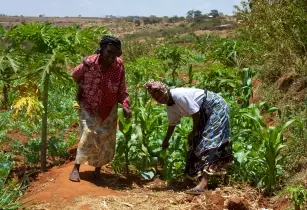A study published in Environmental Research Letter (ERL) estimates that more than 50 per cent of the worlds food calories are produced in regions where the average farm size is less than five hectares, particularly in sub-Saharan Africa
The featured article entitled, Subnational distribution of average farm size and smallholder contributions to global food production written by Leah H Samberg, James S Gerber, Navin Ramankutty, Mario Herrero and Paul C West, looked into the smallholder farms and farming. The authors are from the University of Minnesota, USA, University of British Columbia, Canada, and the Commonwealth Scientific and Industrial Research Organisation (CSIRO), based in Austrailia.
The articles is designed is designed to provide a subnational estimate of the number, average size and contribution of farms across the developing world. It is estimated in the article that there are 918 subnational units in 83 countries in Latin America, sub-Saharan Africa, and South and East Asia that are on average, less than five hectares of agricultural land per farming household.
To evaluate the prevalence of smaller or larger farms, the scientists use a metric dubbed "mean agricultural area" (MAA), which is defined as hectares of agricultural land divided by the number of farming households.
Units with a MAA of less than five hectares play a dominant role in Asia, the researchers found. In sub-Saharan Africa, the proportion drops slightly with smallholder units producing half of the food calories in the region, supported by places with a medium-density of farm households, which account for another 26 per cent. The situation changes again in Latin America, with 70 per cent of food calories produced in regions with large and very large MAAs.








